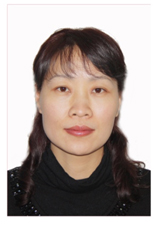Effect of Carbon Content on Microstructure and Thermal Stability of 4Cr5Mo2V Hot Work Die Steel

摘 要
对不同碳含量的4Cr5Mo2V钢进行淬火+回火热处理,研究了碳含量(0.35%,0.47%,0.71%,质量分数)对其显微组织、碳化物演变规律和热稳定性的影响。结果表明:在1 030 ℃淬火后,碳质量分数为0.35%的试验钢中无碳化物,碳质量分数为0.47%,0.71%的试验钢中存在颗粒状富钒MC型碳化物;淬火+回火处理后,试验钢中均析出M23C6碳化物,随碳含量增加,M23C6碳化物增多;进行热稳定性试验后,碳化物大量析出并发生粗化,随热稳定保温时间缩短和碳含量增加,试验钢硬度增大,热稳定性增强;碳含量增加能够提高试验钢的回火转变激活能,碳元素的固溶强化作用与MC型碳化物的析出强化作用是钢热稳定性增强的主要原因。
 热作模具钢
热作模具钢  碳化物
碳化物  热稳定性
热稳定性  carbon content
carbon content  hot work die steel
hot work die steel  carbide
carbide  thermal stability
thermal stability 
Abstract
Quenching and tempering heat treatment of 4Cr5Mo2V steel with different carbon contents were carried out, and the effect of carbon content (0.35%, 0.47%, 0.71%, mass fraction) on its microstructure, carbide evolution and thermal stability was studied. The results show that There was no carbide in test steel with carbon mass fraction of 0.35% after quenching at 1 030 ℃, while granular vanadium-rich MC carbides existed in test steels with carbide mass fraction of 0.47% and 0.71%. M23C6 carbides were precipitated in test steels after quenching and tempering treatment, and the M23C6 carbides increased with the carbon content. After thermal stability test, a large amount of carbides were precipitated and coarsened, and with the thermal stability holding time decreasing and the carbon content increasing, the hardness and thermal stability of test steels increased. The increasing carbon content could improve the tempering transition temperature of test steels, the solid solution strengthening effect of carbon element and the precipitation strengthening effect of MC carbide were the main reasons for the enhancement of high temperature thermal stability of the steel.
中图分类号 TG142.1 DOI 10.11973/jxgccl202008008
所属栏目 试验研究
基金项目
收稿日期 2020/5/22
修改稿日期 2020/7/3
网络出版日期
作者单位点击查看
备注孙立国(1973-),男,吉林桦甸人,高级工程师,硕士
引用该论文: SUN Liguo,ZHOU Jian,YIN Junwei,CHI Hongxiao,QI Yong. Effect of Carbon Content on Microstructure and Thermal Stability of 4Cr5Mo2V Hot Work Die Steel[J]. Materials for mechancial engineering, 2020, 44(8): 38~43
孙立国,周健,殷军伟,迟宏宵,祁勇. 碳含量对4Cr5Mo2V热作模具钢显微组织及热稳定性的影响[J]. 机械工程材料, 2020, 44(8): 38~43
共有人对该论文发表了看法,其中:
人认为该论文很差
人认为该论文较差
人认为该论文一般
人认为该论文较好
人认为该论文很好






参考文献
【1】闵娜,石楠楠,沈赟靓,等.马氏体热作模具钢热稳定性的内耗研究[J].材料热处理学报,2012,33(2):96-99.
【2】LEVY B S,VAN TYNE C J.Effect of Die strength and work piece strength on the wear of hot forging dies[J].Journal of Materials Engineering and Performance, 2015,24(1):416-425.
【3】KIM D H,LEE H C,KIM B M,et al.Estimation of die service life against plastic deformation and wear during hot forging processes[J].Journal of Materials Processing Technology, 2005,166(3):372-380.
【4】王琦, 卢军, 王静,等. 几种热作模具钢性能研究[J]. 热处理, 2014(6): 18-20.
【5】李爽,吴晓春,黎欣欣,等.钼钨系高导热率热作模具钢高温性能[J].材料研究学报,2017,31(1):32-40.
【6】朱姣,马党参,周健,等.铬含量对热作模具钢热处理工艺及热稳定性的影响[J].材料热处理学报,2013,34(10):121-126.
【7】曹奇,吴晓春,李爽,等.两种新型Mo-W热作模具钢的回火性能比较[J].金属热处理,2016,41(5):12-18.
【8】PARK J H,KWEON Y G,KIM H J,et al.The effects of alloying elements on thermal fatigue and thermal shock resistance of the HSLA cast steels[J].ISIJ International, 2000,40(11):1164-1169.
【2】LEVY B S,VAN TYNE C J.Effect of Die strength and work piece strength on the wear of hot forging dies[J].Journal of Materials Engineering and Performance, 2015,24(1):416-425.
【3】KIM D H,LEE H C,KIM B M,et al.Estimation of die service life against plastic deformation and wear during hot forging processes[J].Journal of Materials Processing Technology, 2005,166(3):372-380.
【4】王琦, 卢军, 王静,等. 几种热作模具钢性能研究[J]. 热处理, 2014(6): 18-20.
【5】李爽,吴晓春,黎欣欣,等.钼钨系高导热率热作模具钢高温性能[J].材料研究学报,2017,31(1):32-40.
【6】朱姣,马党参,周健,等.铬含量对热作模具钢热处理工艺及热稳定性的影响[J].材料热处理学报,2013,34(10):121-126.
【7】曹奇,吴晓春,李爽,等.两种新型Mo-W热作模具钢的回火性能比较[J].金属热处理,2016,41(5):12-18.
【8】PARK J H,KWEON Y G,KIM H J,et al.The effects of alloying elements on thermal fatigue and thermal shock resistance of the HSLA cast steels[J].ISIJ International, 2000,40(11):1164-1169.
相关信息
























